
If you don’t mind my interesting story, scroll down to the “quick demo overview” 😉
In the last weeks, I have been playing with HashiCorp’s Consul, for service registration and key/value store.
After playtime, I had to introduce the product to internal Teams, so I prepared a few slides on the architecture and main features of Consul. To complete my presentation I prepared a brief demo which was first using consul-template watching for Consul service catalog and restarting the simple, static HAProxy I had setup in front on my “demo” web app.
The demo web app was the “whoamI” app, “a tiny Go web server that prints os information”, from Emile Vauge, the creator of Traefik proxy. I initially had seen him using it during one cool Traefik demo and already used it for the Traefik on Rancher Cattle post
The “problem”, for me, was that whoamI is available as a docker image but not as a simple executable, and I had no Docker engine available for my demo.
As learning Go was one of my “wish-list”, I decided to clone the GitHub repo, compile it and have it running for my small demo. This was not a big deal and I easily finished the first version of my demo which was consisting in stopping one of the whoamI instances and having consul-template automatically updating a static HAProxy config and restarting HAProxy.
While reviewing my simple demo I said “Ok, nice. But should better illustrate the service registration and key/value possibilities”.
So I started adding the consul client to the “whoamI” application so that it would register/deregister itself to the service catalog. I took me a few evenings, but at the end I managed to have it working!!
The demo took more value, at least to my eyes, but I wanted something a bit more “visual”. So I bravely decided to change the web page showed by the application by adding a banner, that would be read from the Consul k/v store. Fortunately, this time it was slightly easier for me and I didn’t have to spend another few evenings to achieve that.
As I like Traefik and that it supports Consul back-end (among many others), I dropped HAProxy and consul-template from the demo and ended also briefly introducing Traefik 😉
It’s for sure not the best Go code you will find, but it does the job and hopefully can help anyone wanting to make a simple presentation/demo of Traefik and Consul.
The code is available on GitHub, any comment/feedback/star is welcome.
Quick demo overview:
We assume you have a working Consul cluster/host, and a Traefik proxy connected to the Consul backend. You will also need a DNS alias pointing whoami to the Traefik host. We will run the whoamI app on 2 hosts.
Parameters available when starting the app:
-consul string
Consul service catalog address
-consulPort int
Consul service catalog port (default 8500)
-consulToken string
Consul ACL token (optional)
-kvPath string
Consul KV path for banner (optional) (default "PUBLIC/whoamI")
-port int
Port number for HTTP listen (default 8080)
-service string
Service name that will be registered (fqdn better) (default "whoamI")
Let’s start the app on two hosts:
whoamI-consul -port 8080 -consul consul.csnet.me -kvPath PUBLIC/whoamI -service whoami.csnet.me
Once the app is started, go to Consul UI and check the service tab:
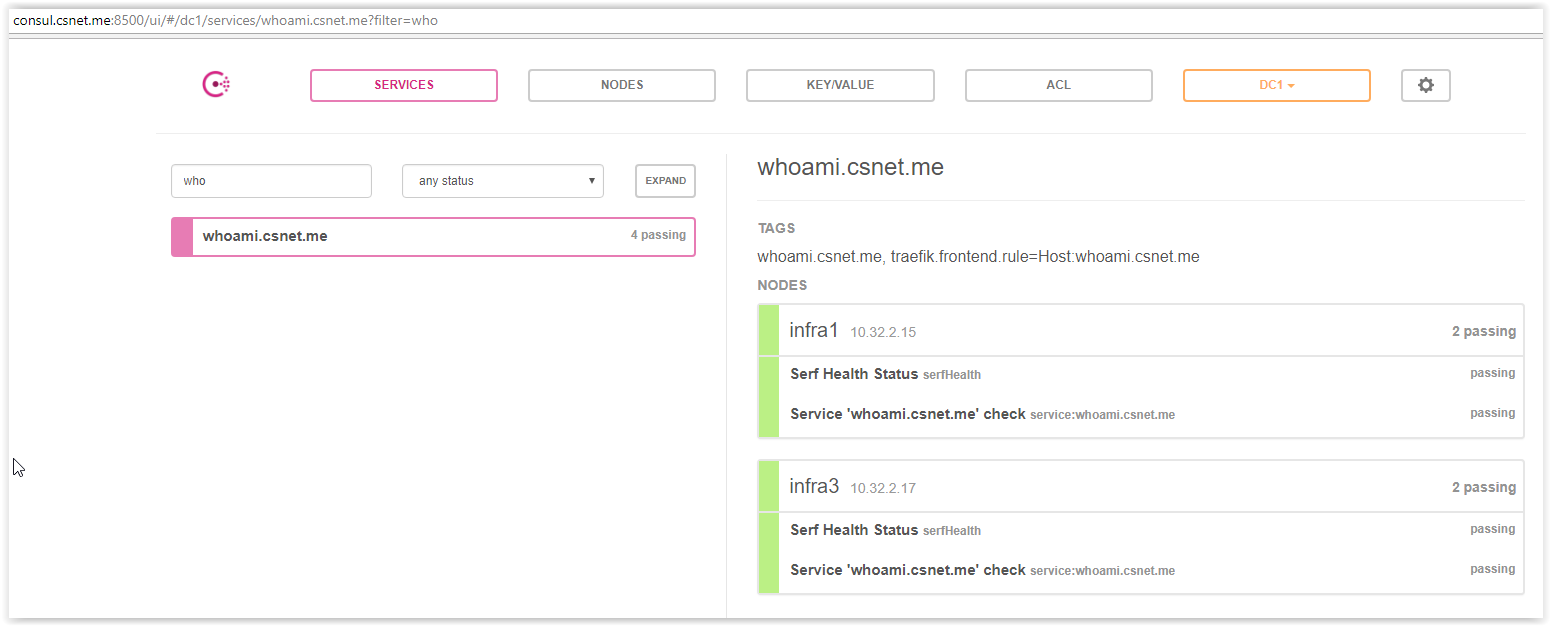
Check the load balancer state on Traefik UI:
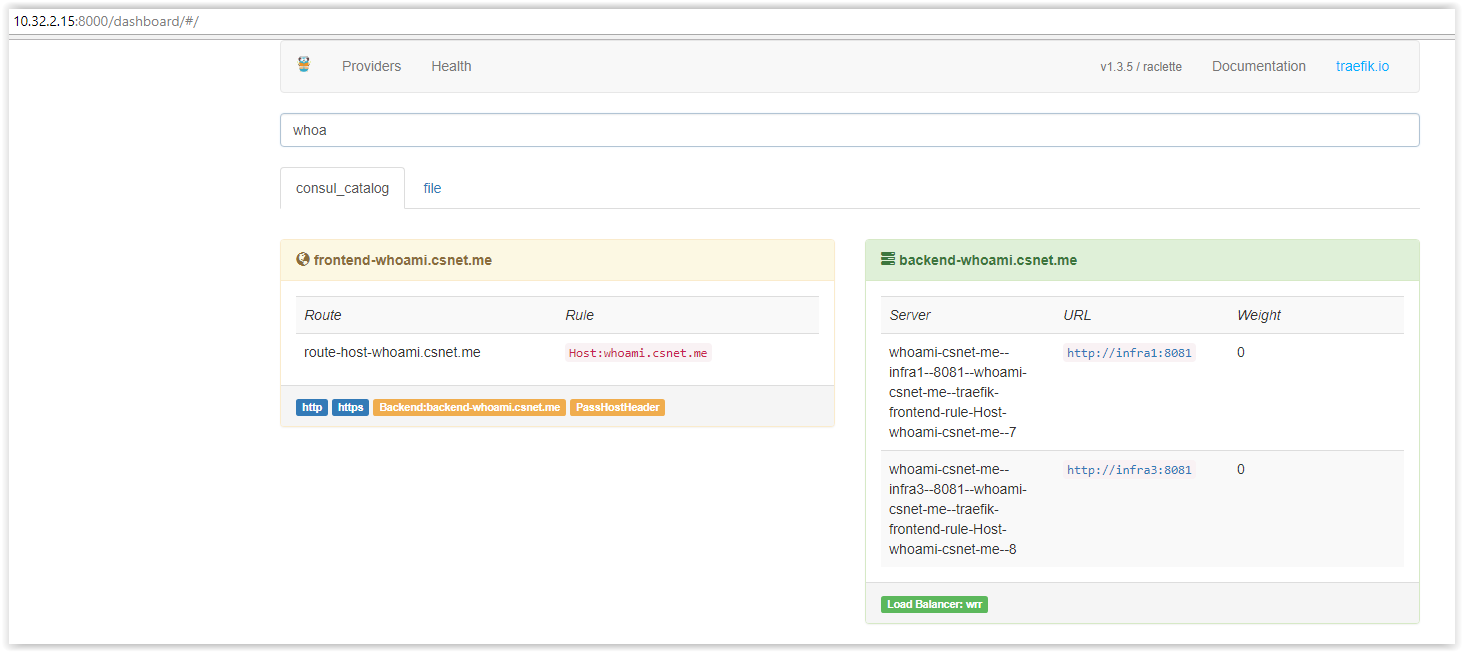
We have no k/v setup on Consul at PUBLIC/whoamI:
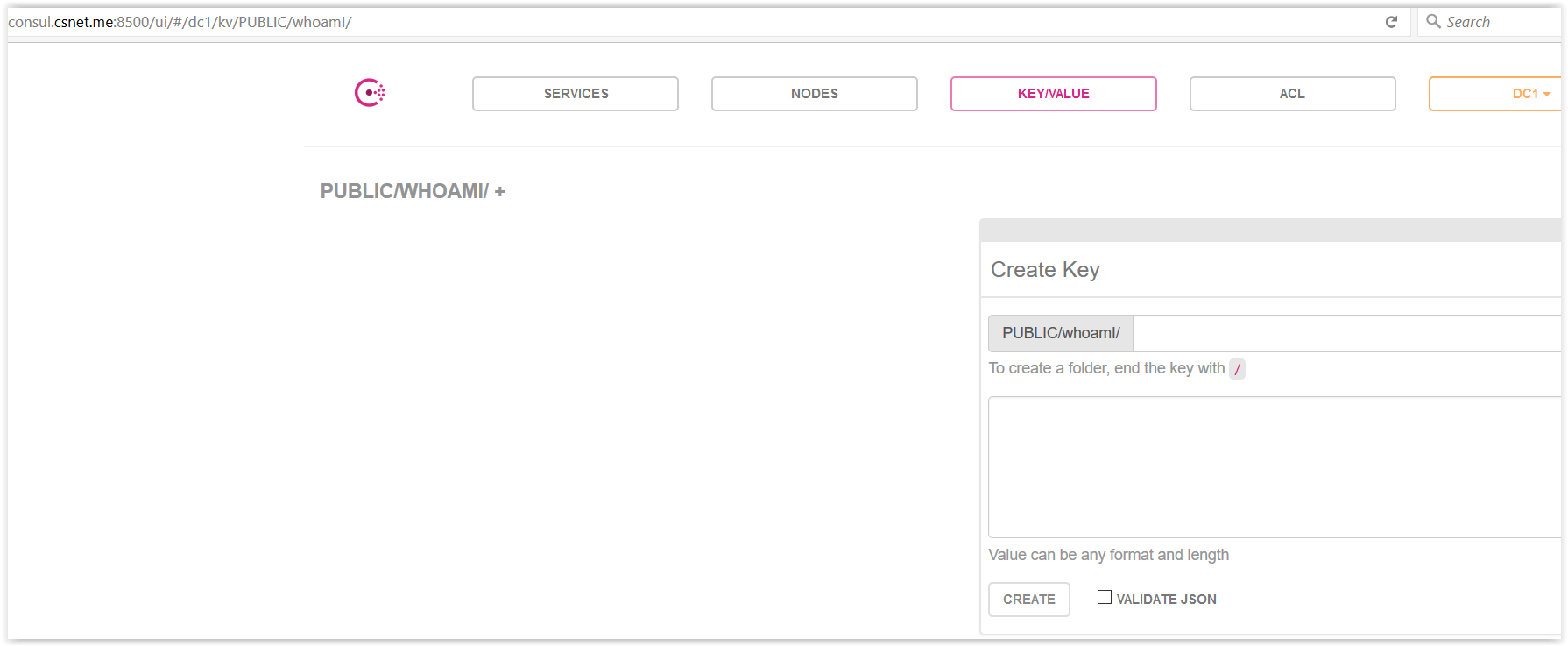
Browse to the app web page, the default banner is displayed, and the requests are balanced among the 2 hosts. If we stop the app one one of the 2 hosts, Traefik will automatically stop sending requests to the “failing” host.
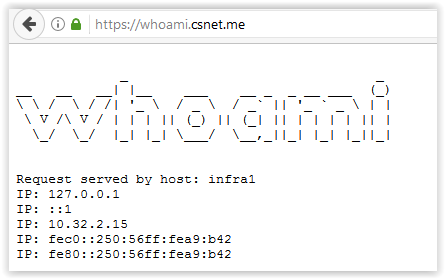
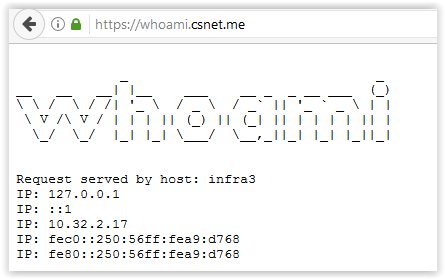
Now we setup the banner k/v in Consul:
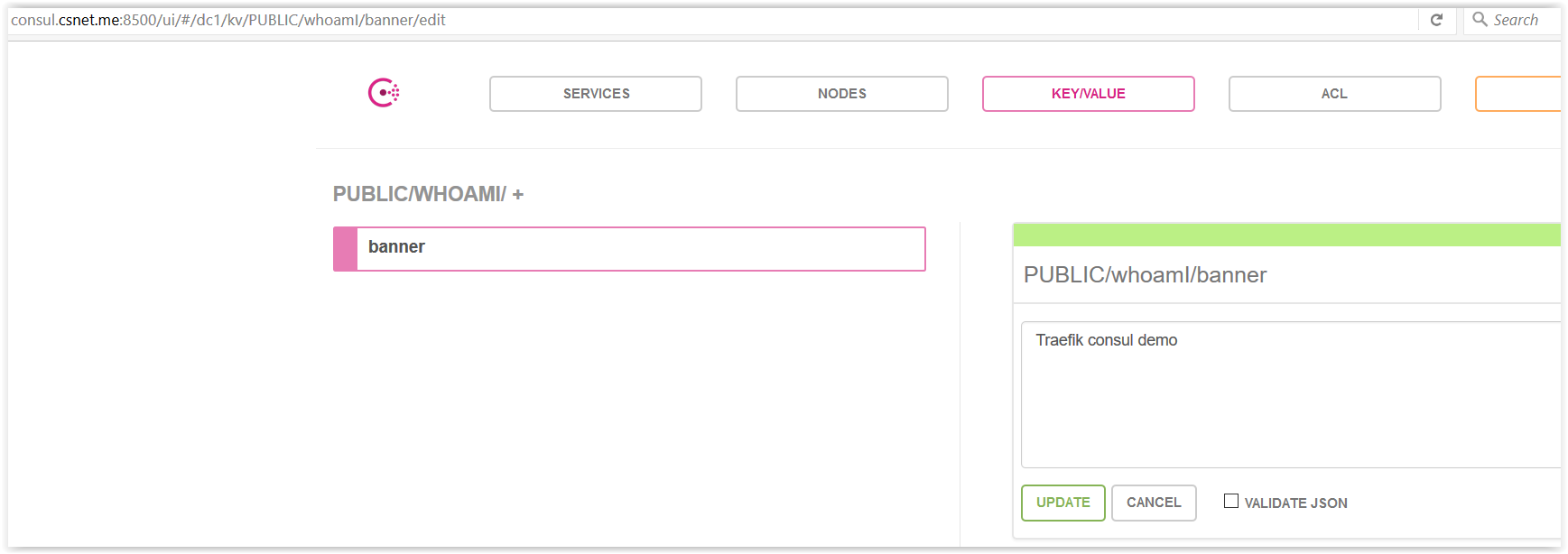
And refresh our browser to see the new banner displayed:

The source code is available on GitHub, any comment/feedback/star is welcome.






Share this post
Twitter
Facebook
Reddit
LinkedIn
Email